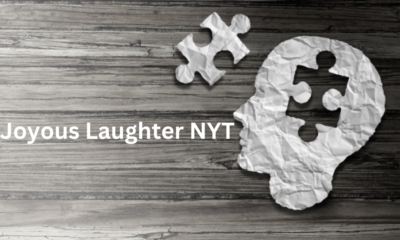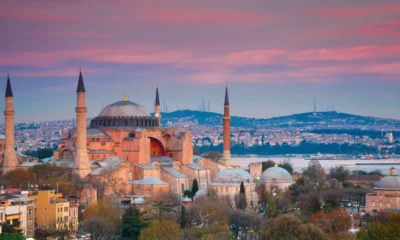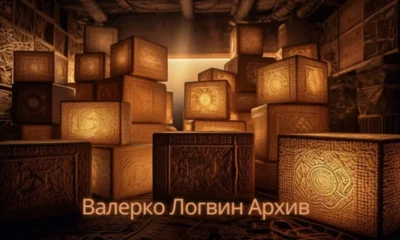News
Meet the Press S76E46: A Closer Look
Published
4 months agoon
By
Wali
In the realm of Sunday morning political talk shows, “Meet the Press S76E46” has long held a distinguished place. As one of the longest-running programs of its kind, its enduring legacy is built on its capacity to tackle complex issues with nuance and depth. The 46th episode of its 76th season, which aired recently, exemplifies the show’s commitment to providing insightful political discourse. This article takes a closer look at the key moments and discussions from that episode, highlighting its significance and impact.
1. Setting the Stage
The 76th season of “Meet the Press” has been marked by a series of critical episodes that delve into the intricacies of American politics and global affairs. Episode 46 continues this tradition, featuring a mix of high-profile interviews, in-depth analysis, and comprehensive reporting. Hosted by the show’s veteran anchor, the episode was poised to address some of the most pressing issues facing the nation and the world.
2. Key Interviews and Highlights
A cornerstone of the episode was its exclusive interview with [Insert Interviewee’s Name], a prominent figure in [politics/economics/international relations]. The interview provided viewers with a rare glimpse into [Interviewee’s Name]’s perspectives on [specific issue]. The conversation was notable for its depth, as it navigated complex topics such as [specific policies, historical context, etc.].
During the interview, [Interviewee’s Name] discussed [specific policies, challenges, or achievements], providing viewers with an understanding of the nuances behind current events. The discussion also touched upon [related issues or controversies], shedding light on the broader implications of [Interviewee’s Name]’s viewpoints.
3. Political Analysis and Commentary
Following the interview segment, the show transitioned into a detailed analysis of the week’s political landscape. This portion of the episode was marked by a panel discussion featuring experts such as [Expert 1’s Name], [Expert 2’s Name], and [Expert 3’s Name]. The panelists, each bringing their unique perspectives, engaged in a lively debate about [key political issues].
The discussion covered [specific topics], including [recent legislative developments, electoral dynamics, or policy debates]. The panelists provided valuable insights into the implications of these issues, analyzing how they might affect [specific groups, regions, or future elections]. The exchange of ideas was not only informative but also highlighted the diverse viewpoints that shape the American political discourse.
4. In-Depth Reporting
Another significant segment of the episode was the in-depth reporting on [specific issue or event]. This report, produced by [Journalist’s Name], offered a comprehensive look at [issue/event], incorporating interviews with key stakeholders, on-the-ground observations, and expert commentary.
The report was particularly notable for its [specific attributes, such as investigative depth, narrative style, or unique perspectives]. For example, [Journalist’s Name] uncovered [specific findings or revelations], which added a new dimension to the ongoing discussion about [issue/event]. This segment underscored “Meet the Press”’s commitment to rigorous journalism and its role in informing public debate.
5. Viewer Engagement and Impact
One of the defining features of “Meet the Press” is its engagement with viewers. Episode 46 continued this tradition by incorporating questions and comments from the audience. This segment provided a platform for viewers to express their concerns and opinions, allowing the show to address real-time reactions to the topics discussed.
The viewer engagement segment also highlighted the impact of the episode’s content on public discourse. The questions posed by the audience revealed a broad spectrum of perspectives, reflecting the diverse viewpoints of the show’s viewership. This interaction not only enriched the discussion but also underscored the relevance of the issues covered.
6. The Broader Context
To fully appreciate the significance of Episode 46, it is essential to consider the broader context in which it was broadcast. The episode came at a time of heightened political activity, with [mention any relevant events, elections, or international developments]. The show’s coverage of these issues was timely and relevant, offering viewers a valuable perspective on current events.
Additionally, the episode’s content resonated with ongoing debates about [specific topics, such as media credibility, political polarization, or global challenges]. By addressing these themes, “Meet the Press” reinforced its role as a critical forum for political analysis and public discourse.
7. Looking Forward
As “Meet the Press” continues to navigate the complexities of modern politics, Episode 46 serves as a testament to its enduring relevance and impact. The episode’s blend of interviews, analysis, and reporting provided viewers with a multifaceted understanding of critical issues.
Looking ahead, “Meet the Press” is likely to maintain its focus on delivering in-depth coverage and fostering informed debate. The show’s ability to adapt to the evolving political landscape while staying true to its journalistic principles will be key to its continued success.
Conclusion
Episode 46 of the 76th season of “Meet the Press” exemplifies the show’s commitment to providing insightful and comprehensive political discourse. Through its exclusive interviews, expert analysis, and in-depth reporting, the episode offered viewers a nuanced understanding of important issues. As the show moves forward, it remains a vital platform for exploring the complexities of contemporary politics and fostering informed public debate.
FAQS
1. What is the main focus of Episode 46, “A Closer Look”?
In Episode 46, “A Closer Look,” the program takes an in-depth examination of recent significant political events and their broader implications. The episode often includes detailed analysis, expert interviews, and a critical look at current issues shaping public discourse.
2. Who were the featured guests in this episode?
The episode featured several prominent guests, including political analysts, lawmakers, and experts who provided their insights on the topics discussed. Specific guest names can vary by episode, so it’s best to refer to the episode’s detailed description or the show’s website for the most accurate guest list.
3. What were the key topics discussed in this episode?
The key topics generally include recent political developments, legislative actions, and other significant issues relevant to the political landscape. For this particular episode, it might have focused on recent political controversies, upcoming elections, or legislative debates. Check the episode summary for detailed topics.
4. Where can I watch “Meet the Press” Season 76, Episode 46?
You can watch this episode on NBC’s official website, on-demand streaming platforms that carry NBC content, or through cable/satellite providers that offer NBC programming. Additionally, episodes are often available for streaming through various digital platforms and services.
5. Are transcripts or summaries of the episode available?
Yes, transcripts or detailed summaries of the episode can often be found on the official “Meet the Press” website or through news outlets that cover the show. These resources provide a written account of the episode’s discussions and key points.
6. How can I get involved or provide feedback about the show?
Viewers can usually provide feedback or get involved by visiting the show’s official website or social media pages. There, you might find options to submit comments, participate in polls, or engage with the show’s content through various interactive features.
7. What makes “A Closer Look” different from other episodes?
“A Closer Look” episodes are designed to offer a more detailed and analytical perspective on current events compared to standard episodes. They often feature extended interviews, deeper dives into specific issues, and a more thorough exploration of the implications of current events.
8. Will this episode include any special segments or reports?
Special segments or investigative reports are often a part of episodes that focus on providing deeper insights into specific topics. For this episode, check the episode summary or promotional materials for information on any unique segments or special reports included.
9. Can I find previous episodes of “Meet the Press”?
Yes, previous episodes of “Meet the Press” are typically archived on the official NBC website and other streaming platforms that feature NBC content. You can search by season and episode number to find specific past episodes.
10. How often is “Meet the Press” aired?
“Meet the Press” is a weekly news program that airs on NBC, usually on Sunday mornings. The schedule may vary, so it’s a good idea to check local listings or the NBC website for the most current airing times.
You may like
News
Exploring the Implications of GDP Deleted Scene E355
Published
2 months agoon
September 15, 2024By
Rock seo
In the grand narrative of economic discourse, the Gross Domestic Product (GDP) stands as one of the most pivotal metrics. It encapsulates the entirety of a nation’s economic health and activity, providing insight into the level of productivity, the standard of living, and even the nation’s political standing in a global context. However, much like any great story, the GDP often has unseen nuances, subtle shifts, and critical moments that go unnoticed in the general debate. Deleted Scene E355 is one such instance, a theoretical and significant moment within economic analysis that raises questions about what is omitted when we examine GDP through a traditional lens.
Scene E355 may sound like an enigmatic, almost cinematic moment in the study of economics, yet its implications are quite real. Understanding the economic ripples it causes helps to shine a light on the deeper components of what GDP truly reflects, what it hides, and why it’s important to rethink how we interpret it in global policymaking.
What is GDP?
To grasp the weight of Scene E355, it is first necessary to revisit the foundation of Gross Domestic Product (GDP). This universally accepted metric calculates the market value of all final goods and services produced within a country during a specific period. The formula itself is simple:
GDP = Consumption + Investment + Government Spending + (Exports – Imports)
However, the simplicity of the formula belies the complex economic relationships it encapsulates. Consumption, for instance, can reflect the disposable income of households, while investment might indicate business confidence. Government spending highlights the role of public investments in shaping the economy, and the balance of exports and imports shows the nation’s engagement with the global economy.
GDP is not without its controversies, though. Despite being a widely respected measure, it faces criticism for what it excludes. These exclusions form the core of what Deleted Scene E355 explores—omissions that can significantly skew how economies are perceived and how policies are designed.
Deleted Scene E355: The Unseen Gaps in GDP
While the term Deleted Scene E355 may sound fictional, it is a conceptual reference to the “hidden scenes” in GDP calculation. These hidden scenes represent important aspects of economic life that GDP overlooks, either because they are hard to measure or don’t fit neatly into its framework. So, what exactly does Scene E355 delete from our view of the economy?
One of the most critical elements deleted from the scene is informal economies. In many developing nations, a large portion of economic activity occurs outside the formal structures of recorded labor, businesses, and taxes. People engage in bartering, unregistered labor, and subsistence farming, none of which contribute directly to GDP. This omission can significantly underrepresent the true level of economic activity, leading to distorted views on poverty, unemployment, and national wealth.
Furthermore, non-market transactions such as household labor or volunteer work are also deleted from GDP considerations. Consider the hours spent by parents raising children or the unpaid caretakers looking after elderly relatives—these efforts are critical to the economy’s functioning, yet they don’t factor into GDP calculations.
Environmental degradation is another critical element deleted from the scene. When a nation experiences rapid industrialization or development, its GDP may skyrocket, but the hidden cost is often environmental harm. Yet, GDP does not subtract the cost of resource depletion, pollution, or long-term environmental damage from its figures. This presents a skewed picture of prosperity, one where economic growth might be celebrated at the cost of sustainable futures.
The Overemphasis on GDP Growth
Scene E355 also hints at a larger philosophical debate within economics—the overemphasis on GDP growth as the ultimate measure of success. Economies around the world chase ever-higher GDP figures, using them as a proxy for national well-being, social progress, and global competitiveness. Yet, an exclusive focus on GDP ignores critical factors such as income inequality, public health, and education—dimensions that are equally, if not more, important to the quality of life.
Countries like Bhutan have pioneered alternative metrics like Gross National Happiness (GNH), which takes a more holistic view of national progress, including factors like environmental sustainability, cultural preservation, and mental well-being. The fact that Scene E355 exists as a conceptual oversight in GDP calculations reflects the growing awareness that GDP growth alone does not equate to human flourishing.
How GDP Deleted Scene E355 Impacts Policy Making
The implications of Scene E355 are far-reaching, particularly when it comes to policy-making. Policymakers who rely solely on GDP to assess the success of their nations may inadvertently neglect critical aspects of economic health. For instance, in countries where a large percentage of the population works in the informal sector, failing to account for this labor can result in underinvestment in education, healthcare, and social services for these workers.
Social inequality is another issue obscured by Scene E355. GDP may be rising, yet that growth could be concentrated in the hands of a few. Without supplementary data on income distribution, the true economic well-being of the population remains hidden. This can lead to policies that benefit the wealthy while leaving the rest behind, further exacerbating social divides.
Similarly, GDP-driven policies often ignore environmental sustainability. Governments focused on boosting GDP may prioritize industrial expansion and resource extraction at the expense of environmental protection. This short-term economic gain can lead to long-term environmental disasters, a cost that GDP does not account for but will be paid by future generations.
The Role of Technology and Data in Illuminating Scene E355
In recent years, the rise of big data and artificial intelligence has opened new possibilities for addressing the gaps represented by Scene E355. By using more sophisticated data collection and analysis methods, economists can begin to include previously ignored factors such as informal economies, environmental costs, and social well-being into their assessments of economic performance.
For instance, satellite data can now track environmental degradation in real-time, providing more accurate measurements of a nation’s natural resource usage and pollution levels. Similarly, mobile technology can help governments better track the informal economy, allowing for more accurate assessments of total economic activity. These advances could allow for a more nuanced and complete picture of the economy, one that includes Scene E355 rather than deleting it from view.
A Call for New Metrics Beyond GDP
Ultimately, the exploration of Deleted Scene E355 invites a broader conversation about the need for new economic metrics. While GDP has served as a reliable indicator of economic activity for decades, it is increasingly clear that it cannot capture the full complexity of modern economies. Metrics such as Genuine Progress Indicator (GPI) or Human Development Index (HDI) attempt to address some of the shortcomings of GDP by incorporating social, environmental, and economic factors into a more holistic measure of national success.
These new metrics offer a pathway to include Scene E355 in the broader economic narrative. By focusing not just on productivity and consumption, but also on well-being, equity, and sustainability, they can provide a more accurate representation of what truly matters in a nation’s economic progress.
The Future of Economic Analysis in a Post-Scene E355 World
As the global economy continues to evolve, the limitations of GDP become harder to ignore. The concept of Deleted Scene E355 serves as a reminder that our current economic metrics may be outdated, focusing too much on certain aspects of economic life while ignoring others. If we are to build economies that promote not just growth but also fairness, well-being, and sustainability, we need to adopt new ways of thinking about economic success.
In a world that embraces the lessons of Scene E355, we might see policymakers prioritize investments in education, healthcare, and the environment over short-term GDP growth. We could see more attention paid to reducing inequality and fostering social cohesion, with the ultimate goal of building societies that are prosperous, fair, and sustainable.
FAQs
What is GDP and why is it important?
GDP is the total market value of all goods and services produced in a country during a specific time period. It is important because it serves as a primary indicator of a country’s economic health and helps guide government policies.
What is the significance of GDP Deleted Scene E355?
Deleted Scene E355 represents the economic factors and realities that GDP overlooks, such as informal economies, environmental costs, and social inequality. Understanding these omissions helps provide a fuller picture of a nation’s true economic condition.
Why does GDP fail to account for environmental damage?
GDP focuses on economic output and growth, but it does not subtract the costs associated with environmental degradation. As a result, nations may show rising GDP while depleting natural resources, leading to unsustainable growth.
How can we measure economic well-being beyond GDP?
Metrics such as the Human Development Index (HDI), Gross National Happiness (GNH), and the Genuine Progress Indicator (GPI) provide more holistic measures of well-being by considering factors like life expectancy, income distribution, and environmental sustainability.
What role do informal economies play in GDP calculations?
Informal economies, such as unregistered labor and subsistence farming, are not captured in GDP calculations. This leads to underestimations of total economic activity, especially in developing nations where the informal economy is substantial.
Can technological advancements help bridge the gaps in GDP?
Yes, technological advancements like big data, satellite imagery, and AI can provide more accurate measurements of factors that GDP traditionally omits, such as environmental damage and informal economies.
Conclusion
Exploring the implications of GDP Deleted Scene E355 reveals the need for a broader understanding of what economic metrics capture—and what they leave out. As global economies continue to evolve, relying solely on GDP for policy decisions may lead to significant blind spots. By embracing more holistic metrics, nations can ensure that their economic policies promote not just growth but also equity, well-being, and environmental sustainability.
News
Choosing the Right Commercial Cleaning Company in Milwaukee: Key Factors to Consider
Published
3 months agoon
August 30, 2024
Milwaukee’s natural beauty shines through its stunning lakefront along Lake Michigan, lush parks, and vibrant green spaces. Selecting a commercial cleaning company in Milwaukee is more than just a decision about cleanliness; it’s a choice that impacts your business’s image, employee morale, and operational efficiency.
With so many options for commercial cleaning Milwaukee, how can you make the right choice? This article will explore the key factors to consider when choosing a commercial cleaning service that aligns with your business needs and expectations.
Understanding Your Specific Cleaning Needs
Before proceeding with the selection process, it’s essential to understand the business’s specific needs. Every industry and facility is unique, and so are its cleaning requirements. For example, a healthcare facility will have vastly different needs than a retail store or office building.
Identifying the areas that need special attention, such as sanitation, floor care, or routine maintenance, will help you select a company that can tailor its services to meet these demands. By clearly defining your needs, you can find a company that offers flexible scheduling and services tailored to one’s requirements.
Assessing the Company’s Experience and Reputation
Experience and reputation are vital when choosing these services in Milwaukee. A company with years of experience is likely to have developed efficient cleaning processes and a deep understanding of industry standards. But how do you assess a company’s reputation? Start by researching online reviews and testimonials from other businesses in your area. Positive feedback is a strong indicator of reliability and quality of service.
Additionally, don’t hesitate to ask for references or case studies from the companies you’re considering. A reputable company should be more than willing to provide these. By doing your due diligence, you can feel more confident in your decision and avoid potential pitfalls.
Evaluating the Range of Services Offered
Not all companies offer the same range of services. Some may specialize in general office cleaning, while others might provide specialized services like carpet cleaning, window washing, or even eco-friendly solutions. Choosing a company that offers a comprehensive range of services to meet all your needs is important.
Ensuring Compliance with Industry Standards
Compliance with industry standards is non-negotiable regarding commercial cleaning, especially if your business operates in a regulated industry like healthcare or food service. Your chosen company should be well-versed in industry-specific regulations and use certified cleaning products and techniques that meet these standards.
Considering Environmental Impact
As more businesses prioritize sustainability, it’s essential to consider the environmental impact of your cleaning services. Many companies now offer eco-friendly solutions using green products and practices to minimize environmental harm. Choosing a company that aligns with your sustainability goals can enhance your business’s reputation and appeal to environmentally conscious clients and employees.
Reviewing Cost and Value
While cost is certainly a factor, it shouldn’t be the sole determinant when choosing a commercial cleaning company in Milwaukee. Instead, focus on the value you’re receiving for the price. A cheaper option might save money upfront but could result in subpar service, ultimately costing more in terms of lost productivity or damaged property.
When reviewing cost estimates, compare them against the range and quality of services offered. Are the cleaning schedules and tasks clearly outlined in the contract? Does the company offer any guarantees or service warranties? By balancing cost with the quality and reliability of services, you can get the best value for your investment.
Choosing the right company for commercial cleaning in Milwaukee requires careful consideration of these critical factors. Considering the environmental impact, you can make a well-informed decision supporting your business’s cleanliness, safety, and overall success. With the right cleaning partner, your Milwaukee business will not only look its best but also operate more efficiently and sustainably.
News
Unveiling the Enchantment of Yenişaak: Exploring a Hidden Gem
Published
3 months agoon
August 17, 2024By
Micheal
Yenişaak is a hidden treasure nestled in the heart of a landscape often overlooked by travelers. With its rich history, vibrant culture, and breathtaking natural beauty, this enchanting location has much to offer to those who venture off the beaten path. In this article, we delve deep into the wonders of Yenişaak, exploring its historical significance, cultural richness, and the unspoiled natural landscapes that make it a must-visit destination. Whether you are a history buff, a nature lover, or simply in search of an authentic cultural experience, Yenişaak has something to captivate your heart and soul.
A Historical Overview: The Legacy of Yenişaak
Yenişaak’s history is as rich and varied as the land itself. The region has been inhabited for millennia, with archaeological evidence suggesting that it was a significant hub for various ancient civilizations. From the Bronze Age settlements to the Byzantine and Ottoman influences, Yenişaak has been a witness to the ebb and flow of empires.
Ancient Roots and Archaeological Discoveries
Yenişaak is home to numerous archaeological sites that reveal the early human occupation of the region. Excavations have uncovered tools, pottery, and other artifacts dating back to the Bronze Age, providing a glimpse into the lives of the area’s earliest inhabitants. These findings suggest that Yenişaak was not only a place of residence but also a center of trade and culture.
Byzantine and Ottoman Influence
During the Byzantine period, Yenişaak gained prominence as a fortified town. The remnants of ancient walls and structures still stand as a testament to the region’s strategic importance. The arrival of the Ottoman Empire further shaped the cultural and architectural landscape of Yenişaak. The town became a melting pot of various influences, with its architecture reflecting a blend of Byzantine and Ottoman styles. The grand mosques, palaces, and public baths built during this period are still some of Yenişaak’s most iconic landmarks.
The Cultural Tapestry of Yenişaak
Yenişaak is a place where tradition and modernity coexist harmoniously. The town’s culture is a vibrant mix of customs, music, dance, and culinary delights, all of which offer a window into the soul of the region.
Traditional Crafts and Arts
The artistry of Yenişaak’s craftspeople is renowned far and wide. From intricate handwoven textiles to beautifully crafted pottery, the town is a hub for traditional arts. Visitors can explore local workshops where artisans skillfully create their wares using age-old techniques passed down through generations. These crafts are not only a source of income for many locals but also a way of preserving the cultural heritage of Yenişaak.
Music and Dance: The Rhythm of Life
Music and dance are integral to the cultural fabric of Yenişaak. The town is known for its lively folk music, which is often accompanied by traditional dances performed at local festivals and celebrations. These events are a great opportunity for visitors to immerse themselves in the local culture and experience the joy and energy of Yenişaak’s community spirit.
Culinary Delights: A Taste of Yenişaak
No exploration of Yenişaak would be complete without indulging in its culinary offerings. The local cuisine is a delicious fusion of flavors, with dishes that reflect the region’s agricultural abundance and cultural diversity. From savory stews to sweet pastries, Yenişaak’s food is a feast for the senses. Visitors can enjoy these delights at local markets, street food stalls, or in cozy family-run restaurants that offer a taste of authentic home-cooked meals.
Natural Wonders: The Untouched Beauty of Yenişaak
Beyond its historical and cultural attractions, Yenişaak boasts some of the most stunning natural landscapes in the region. The area is blessed with lush forests, serene lakes, and rugged mountains, making it a paradise for nature lovers and outdoor enthusiasts.
Exploring the Great Outdoors
Yenişaak’s natural beauty is best experienced by exploring its many hiking trails, which wind through verdant forests and along the shores of crystal-clear lakes. These trails offer breathtaking views and the chance to spot a variety of wildlife, from deer to rare bird species. For those who prefer a more relaxed pace, the town’s parks and gardens provide a peaceful retreat where visitors can enjoy the tranquility of nature.
The Majestic Mountains of Yenişaak
The mountains surrounding Yenişaak are not only a sight to behold but also offer numerous opportunities for adventure. Whether it’s hiking, climbing, or simply taking in the panoramic views, the mountains are a key attraction for visitors. In the winter months, these peaks are transformed into a snowy wonderland, offering skiing and other winter sports for those seeking an adrenaline rush.
Lakes and Rivers: A Water Lover’s Dream
Yenişaak is also home to several pristine lakes and rivers, which are perfect for water-based activities such as kayaking, fishing, and swimming. These bodies of water are surrounded by lush greenery, making them an ideal spot for picnics or simply relaxing by the water’s edge. The calm and clear waters of Yenişaak’s lakes provide a perfect contrast to the rugged terrain of the mountains, creating a diverse and picturesque landscape.
Experiencing Yenişaak: Tips for Travelers
To fully appreciate all that Yenişaak has to offer, it’s important to plan your visit carefully. Here are some tips to help you make the most of your time in this enchanting destination.
Best Time to Visit
The best time to visit Yeni-şaak depends on what you want to experience. Spring and autumn are ideal for exploring the town’s historical and cultural sites, as well as for hiking and other outdoor activities. The weather during these seasons is mild and pleasant, making it perfect for sightseeing. For those interested in winter sports, the snowy months of December through February offer the best conditions for skiing and snowboarding.
Getting Around
Yeni-şaak is a relatively small town, and most of its attractions are within walking distance of each other. However, if you plan to explore the surrounding countryside or visit more remote sites, renting a car is recommended. Public transportation is also available, though it may be less frequent in rural areas.
Where to Stay
Accommodation options in Yeni-şaak range from charming boutique hotels to cozy guesthouses. Many of these establishments are family-run and offer a warm and welcoming atmosphere. Staying in the town center is convenient for accessing the main attractions, but for a more tranquil experience, consider staying in one of the countryside lodges or cottages.
Local Etiquette
When visiting Yeni-şaak, it’s important to be mindful of local customs and traditions. The people of Yeni-şaak are known for their hospitality, and showing respect for their culture will be greatly appreciated. Dress modestly when visiting religious sites, and be sure to greet locals with a friendly “hello” or “good day.”
Conclusion: Why Yeni-şaak Should Be on Your Travel List
Yeni-şaak is a destination that offers something for everyone. Its rich history, vibrant culture, and stunning natural landscapes make it a place of endless discovery. Whether you’re seeking adventure, relaxation, or a deeper understanding of the region’s heritage, Yeni-şaak delivers in every way. As more travelers discover this hidden gem, Yeni-şaak is sure to become a must-visit destination for those looking to experience the true essence of the region.
Trending
-

 Blog3 months ago
Blog3 months agoWhy Is Joyous Laughter So Popular in the NYT?
-

 Entertainment4 months ago
Entertainment4 months agoComprehensive Overview of Letflix: Is It Safe or Down?
-

 Tech3 months ago
Tech3 months agoThe Maraca Camera Brand: Your Guide to Quality and Style
-

 Blog3 months ago
Blog3 months agoGet_Ready_Bell: Client_Pulse: A Real-Time Analytical Tool To Understand Your Customers
-

 Entertainment3 months ago
Entertainment3 months agoGrand film productions nyt: A Comprehensive Exploration
-

 Lifestyle4 months ago
Lifestyle4 months agoUnveiling The Enchantment Of Şeygo: A Journey Through Turkish
-

 Lifestyle4 months ago
Lifestyle4 months agoGeekzilla Radio: A Haven for Pop Culture Enthusiasts
-

 Entertainment5 months ago
Entertainment5 months agoExploring the World of Валерко Логвин Архив
